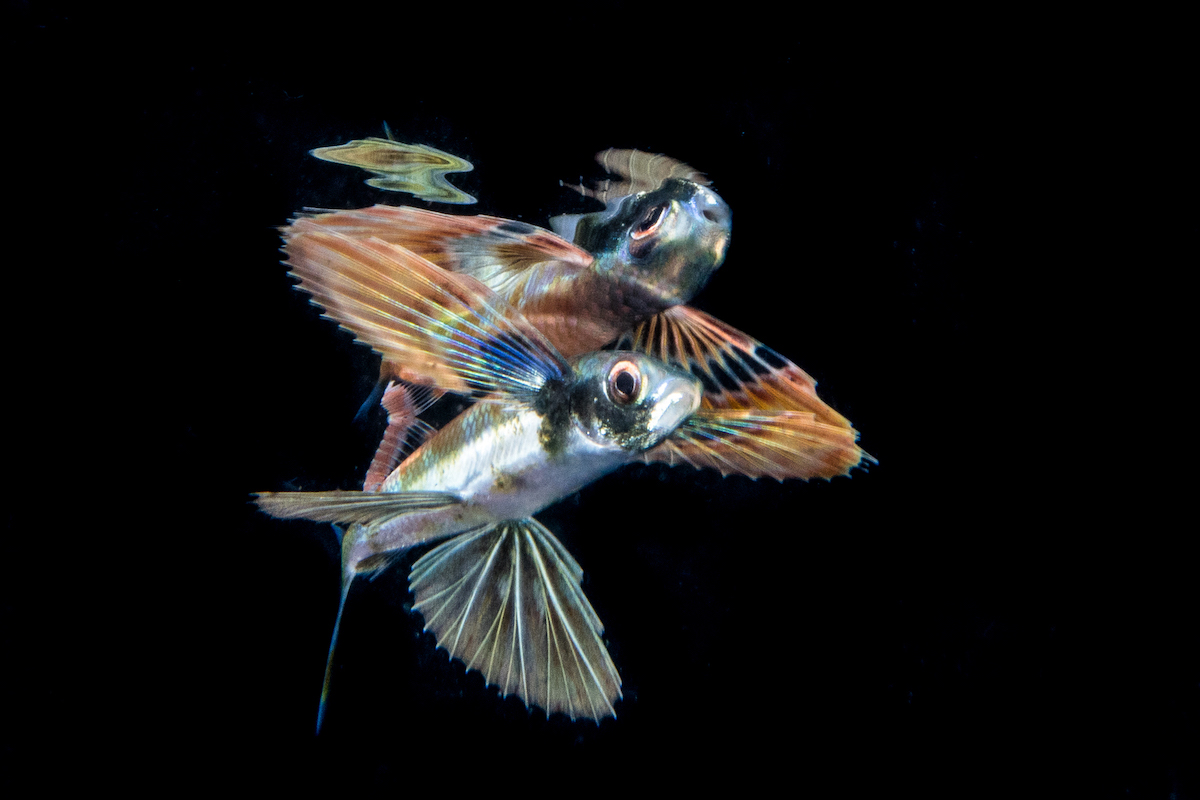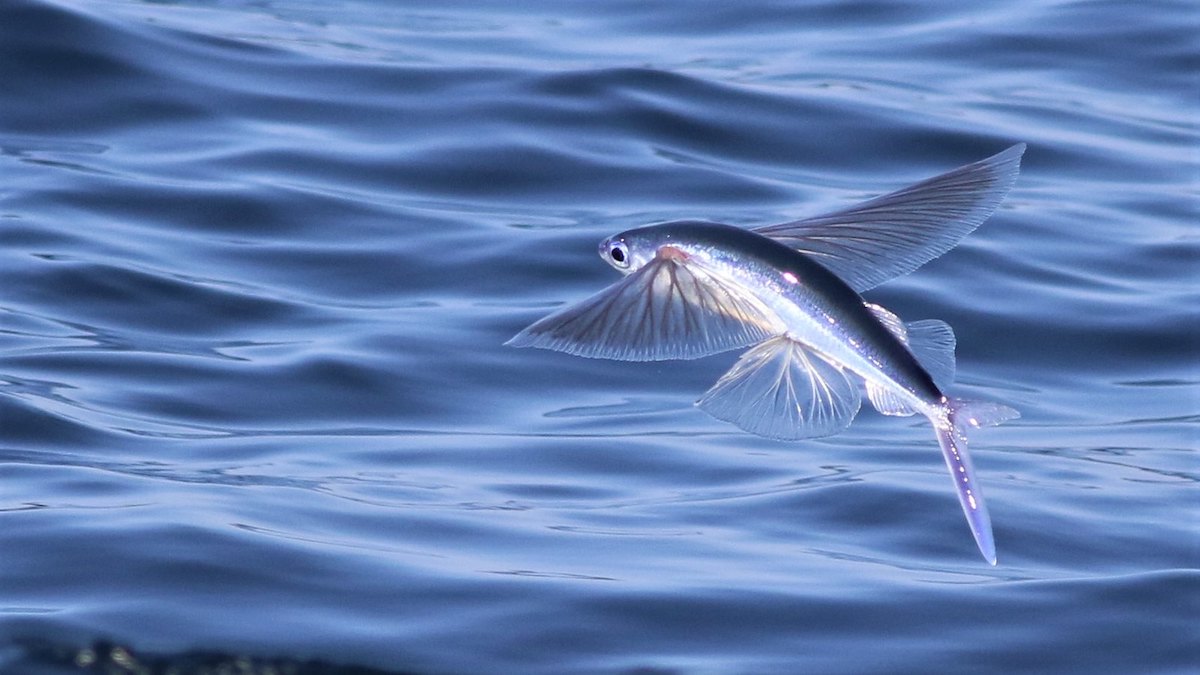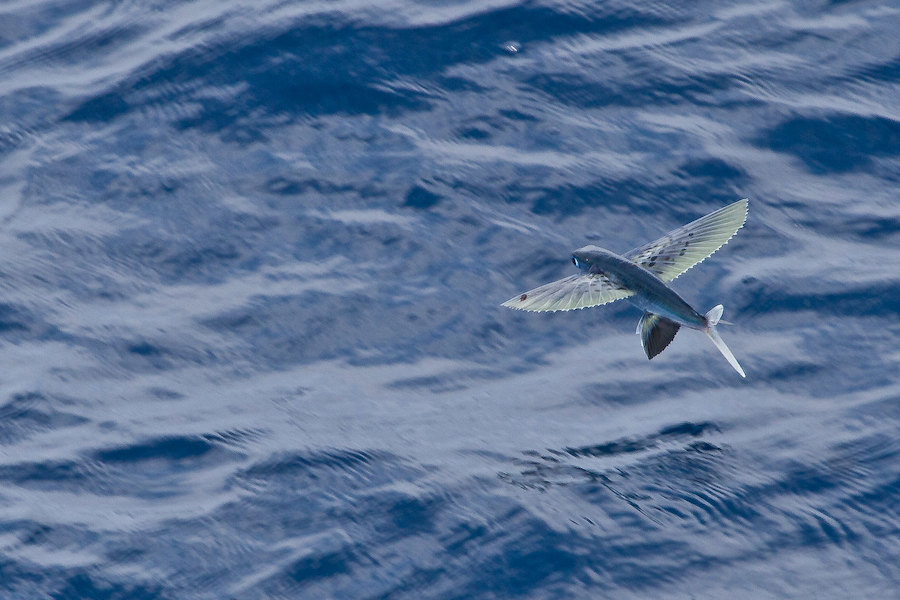How do Flying Fish “Fly”?
And more fun facts about flying fish

It’s a bird! It’s a plane! It’s a … fish?
Although most fish don’t take to the skies, flying fish are one spectacular exception (kind of). Read on to see how flying fish get their distinctive name and learn more fun facts about this small but impressive species.
What are flying fish?
Flying fish are species in the family Exocoetidae, which is derived from the Latin word “exocoetus” which means “fish that sleeps on the shore.” There are more than 70 species across seven genera (remember, a genus is a type of classification which groups related species together). They are found across the ocean, primarily in tropical and subtropical zones, and the largest species can grow to about 19 inches long.

Can flying fish actually fly?
Sorry to disappoint, but flying fish can’t actually “fly”—at least, not in the way we typically think of flying. They can’t flap their fins in the way birds flap their wings to become airborne. But they do use their very large pectoral, or side, fins to glide over the ocean surface. First, they swim very fast under water, reaching speeds of more than 35 miles per hour. Then, they use this momentum to launch themselves out of the water and fan their fins out to glide forward. Flying fish can “fly” for up to 650 feet—that’s over a tenth of a mile! Their sleek, streamlined bodies also help them soar through the air.
Flying fish can stay out of the water even longer if they flap their tails—the longest known flying fish flight was 1,312 feet.

Why do flying fish jump out of the water?
Flying fish take to the skies to avoid predators. If being pursued by a predator like a swordfish or marlin, they can use this strategy to quickly get away and hopefully confuse the would-be attacker. It’s not a foolproof plan, however, as birds can also swoop down and grab an airborne flying fish as a snack. Don’t take my word for it—check out this heart-pounding footage of flying fish trying to evade hungry predators from BBC’s The Hunt.
How are flying fish doing?
Good news: Flying fish populations are in pretty good shape! According to the International Union for Conservation of Nature (IUCN) Red List, most species of flying fish are considered of “least concern,” meaning there are still plenty of them in the wild.
Flying fish are one part of a healthy ocean ecosystem. There are many more fish in the sea (literally) that need our help. Learn about how Ocean Conservancy is working with partners to achieve healthy, sustainable fisheries.
Looking for more fishy fun facts? Check out our Wildlife Fact Sheets!